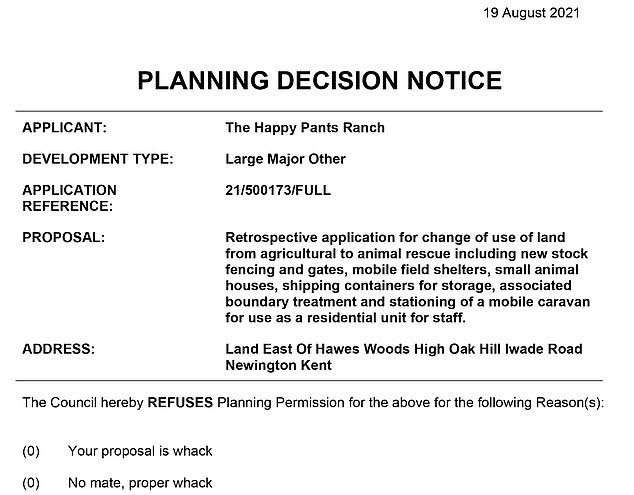I’m reminded of those interminable “love is…” cartoons.
Levelling Up is…
…regenerating high streets?
… tackling obesity?
…investing in culture?
…increasing numbers of police officers?
…funding roads?
…establishing freeports?
…local devolution?
et cetera.
Maybe it would be easier to define what it isn’t?
From the ITV website today (24 September 2021): 58% of Brits don’t know what ‘levelling up’ policy is while ministers also unclear, reports find.
See also these tweets today from the Daily Telegraph’s chief political correspondent Christopher Hope (thank you for alerting me, Mike Best):


Congratulations to the 42% in the ITV poll but for the rest of us this is all no surprise. The House of Commons BEIS Committee’s 22 July 2021 report Post-pandemic economic growth: Levelling up lays it bare:
From the introduction:
“On his appointment as Prime Minister in July 2019, Rt Hon Boris Johnson MP said in a speech, on the steps of Downing Street, that he would “answer the plea of the forgotten people and the left behind towns” and “level up across Britain” by unleashing the “the productive power not just of London and the South East but of every corner of England, Scotland, Wales and Northern Ireland””.
From the summary:
“Levelling up—meaning, in our view, the spreading of economic and social opportunities more evenly across the country—is laudable and should be a priority for any Government.
However, whilst recognising the understandable impact the pandemic has had on Government capacity, we are disappointed at how little detail has been put forward to explain what the Government sees levelling up to mean and how it will be delivered.”
“As such, we have made several recommendations to Government, including recommendations to:
• Urgently publish the Levelling Up White Paper, so that we are clear on what the Government defines levelling up to mean and what its priorities are.
• Work with the Office for National Statistics, the Cities and Local Growth Unit in the Business Energy and Industrial Strategy department and the National Audit Office to agree a set of metrics for the routine reporting of progress in delivering levelling up priorities.
• Establish the functioning of a Cabinet Committee on levelling up, that collaborates with devolved, regional, and local leaders.
• Recognise that inequalities exist across the whole of the UK, including within cities, and that levelling up priorities should therefore not be focussed on only some regions or sub-regions of the UK.
• Ensure that each region in England has the capacity to competitively bid for Government funding, given that some areas in England have a greater capacity to engage with Whitehall than other areas.
The levelling up agenda has been described by the Government as its ‘most important mission’. It is now imperative for Ministers to translate this from a political promise into a deliverable programme for Government. The forthcoming Levelling Up White Paper, which we understand will now include the previously announced Devolution White Paper, gives the Government the opportunity to be bold and progressive. We look forward to its publication and, in future, engagement with Ministers on their delivery of levelling up.”
From the main part of the report:
“Giles Wilkes, former industrial and economic special adviser to former Prime Minister Rt Hon Theresa May MP, noted that the Government’s use of the phrase levelling up was so widespread that it had become nothing more than a generic term for “make things better”. Rafael Behr of the Guardian referred to levelling up as a “rhetorical zeppelin”, which was “floating on the political horizon, carrying no cargo of policy”.
“The current available documents on the policy instruments the Government aims to use to level up—the Conservative Party Manifesto, its submission to this inquiry and the 2021 Queen’s Speech—show a wide ranging and disjointed programme of random policies from an obesity strategy, an increase in police officers, to funding on A roads and the creation of Freeports. Although these policies are all very interesting and welcome, it is difficult to see how they all tie together under one over-arching strategy. The cohesion of the whole has not been well described to identify how these fit together. If the Government is serious about levelling up and for it to be a substantive strategy rather than merely a slogan, it must spell out a coherent ‘plan’ as a matter of urgency”
Is this unfair? Possibly not. Motherhood is good and it’s clear from the Conservative 2019 manifesto that levelling up is good:
“Our plan means making sure people have access to world-class public services, that they feel safe on the streets, that working families get to keep more of their own money, and that we help with cost of living pressures.
But it also means making sure that we share prosperity across the country, addressing the longstanding economic challenges in parts of the country. We will invest responsibly and prudently in the infrastructure that can make a difference, and ensure communities in every corner of the United Kingdom are pleasant, safe and prosperous. And we will invest far more in helping workers train and retrain for the jobs and industries of the future. Investing in people, restoring the fabric of our towns and cities, building the homes we need, supporting science and industry, strengthening the great Union between the United Kingdom’s four nations – that is how we will unleash our country’s full potential.”
“…in his first months as Prime Minister, Boris Johnson has set out an agenda for levelling up every part of the UK – not just investing in our great towns and cities, as well as rural and coastal areas, but giving them far more control of how that investment is made. In the 21st century, we need to get away from the idea that ‘Whitehall knows best’ and that all growth must inevitably start in London. Because we as Conservatives believe you can and must trust people and communities to make the decisions that are right for them.”
There is of course the £4.8 billion Levelling Up Fund, announced as part of the 2020 Spending Review. As set out in the March 2021 Levelling Up Fund Prospectus:
“The Fund will focus on capital investment in local infrastructure thereby building on and consolidating prior programmes such as the Local Growth Fund and Towns Fund. It will have a visible, tangible impact on people and places, and support economic recovery. In doing so, it will also create opportunity across the country, prioritising bids that invest in regeneration and growth in places in need and areas of low productivity and connectivity.”
The first round of the fund is focusing on smaller transport projects; regeneration and town centre investment, and cultural investment : £4 billion for England for the next four years to 2024-2025 and at least £800,000 for Scotland, Wales and Northern Ireland. Save in Northern Ireland, funding will be delivered via local authorities. The fund is jointly managed by HMT, DLUHC and DfT.
The prospectus was published alongside a list of local authorities by priority category. There is also a June 2021 prioritisation of places methodology note. The Good Law Project secured permission from Bourne J on 19 August 2021 to take to a full hearing its judicial review of the methodology, which is reported to be based on its allegations that (according to the news piece) “the Government is using the £4.8bn fund to funnel money into regions and towns of political benefit to the Conservative Party. The not-for-profit legal group alleges that the Government is guilty of ‘pork barrel politics’. They cite, for example, the fact that 22 of 26 places that received funds from the Towns Fund are represented by Conservative MPs.”
I won’t comment on that allegation but do note that there is an unusual bidding criterion for local authorities, which gives MPs an important role in the allocation of monies:
“We expect bidding authorities to consult local Members of Parliament as part of their bid; though such support from local MPs is not a necessary condition for a successful bid. MPs can have a positive role in prioritising bids and helping broker local consensus. When considering the weighting given to bids, the expectation is that an MP will back one bid which they see as a priority, and any bid may have priority backing from multiple MPs and local stakeholders. But Members of Parliament may also want to support any or all schemes that would have a benefit to their constituencies in the usual way.”
The levelling up agenda is currently a potent political theme for Conservative MPs, 40 of whom formed a “Levelling Up Taskforce” in September 2020, the launch of which was marked by the publication by Onward of a report by MP Neil O’Brien, Measuring up for levelling up.
Neil O’Brien was subsequently appointed in May 2021 by the prime minister as Levelling Up Adviser. The announcement was made within a 4 May 2021 government press statement which referred to a “landmark” levelling up white paper “later this year, articulating how bold new policy interventions will improve opportunity and boost livelihoods across the country as we recover from the pandemic.” “The White Paper – which will be led by the Prime Minister – will focus on challenges including improving living standards, growing the private sector and increasing and spreading opportunity.” This white paper of course will partly be a rebadged version of the white paper which was originally promised for publication last year on “devolution and local recovery”. As of the date of the press statement, a “new No10 – Cabinet Office Unit [was to] be set up to drive through work on the White Paper.”
I am not sure how much “driving through” has since taken place but Neil O’Brien of course has been now appointed as a minister within the new Department for Levelling Up, Housing and Communities. In the Government’s 19 September 2021 press statement announcing the name of the new Department (massively symbolic in itself) and make-up of its ministerial team it was stated that former Bank of England chief economist (and incoming chief executive of the RSA) Andy Haldane has been appointed as a permanent secretary in the Cabinet Office for six months to “head up the Levelling Up Taskforce that will report jointly to the Prime Minister and the Secretary of State for Levelling Up, Housing and Communities.”
“The Prime Minister, Boris Johnson MP, said:
This government is committed to uniting and levelling up every part of the UK and I am determined that as we build back better from the pandemic we are geared up with the teams and expertise to deliver on that promise.
Andy is uniquely qualified to lead our efforts to raise living standards, spread opportunity, improve our public services and restore people’s sense of pride in their communities. I look forward to working with him, and with my new ministerial team, to deliver the opportunities this country needs.”
Andy Haldane is a serious individual and it is a significant appointment, if only for a short period of time – blink and it’s gone.
I’m sure I’m not the only person utterly frustrated that the main engine of government in our specialist area of interest is now named, for party political reasons, after such an amorphous concept. I’m still not clear as to what levelling up is (or, rather, what it isn’t) but I sense that for the Government it is at the very heart of its political agenda in a way that will define its priorities in terms of housing and economic growth (and therefore its thinking in relation to reform of the planning system). I’m sorry to reduce it to this because the aspirations are, as the BEIS Committee said, laudable but… is it about any less than “making things better” in such a general sense as to be meaningless, or about any more than focusing on issues are relevant to voters in marginal seats in such tactical ways as have no strategic coherence?
Insights very welcome.
Simon Ricketts, 24 September 2021
Personal views, et cetera
For our Planning Law Unplanned clubhouse event at 6pm on Tuesday 28 September, we are picking up on a comment made by DLUHC minister Eddie Hughes this week that there would be a “full review” of the NPPF. Our theme is NPPF “full review”: what to expect in reality/your dreams? and our special guests will include Steve Quartermain, Nicola Gooch and Mike Best as well as our usual stellar panel. Link to app here.












